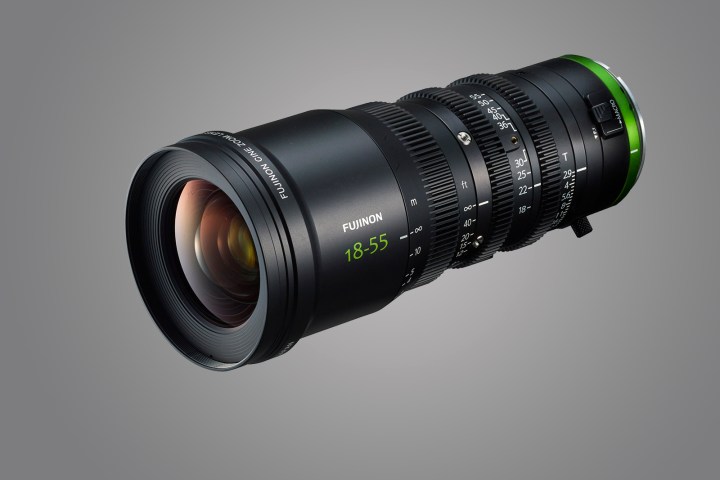
The series starts with two lenses, the MK 18-55mm T2.9, with sales that began in March, and the 50-135mm T2.9, expected to launch this summer. Along with introducing the new series, Fujifilm also shared a lens roadmap that has the company releasing new still lenses as well as an XF 80mm f2.8 stabilized macro later this year. In 2018, the company expects to release an ultra-wide-angle zoom and a telephoto prime after numerous requests from professional photographers, Fujifilm says.
The company says the move was a response to videographers using lenses designed for stills because of their affordability and portability. The company says the new line will offer “outstanding cost performance that has never been seen in conventional cinema lenses until now.” As cinema lenses, however, the new glass will still sell for four figures, with the 18-55mm listing for $3,799. The price for the second lens hasn’t yet been announced.
Compared to the company’s still lenses, the cinema line is expected to cut the focus shift and optical axis shift that still lenses often exhibit while zooming, enabling smoother zooms while recording. By separating the front lens element and the zooming elements into their own systems, Fujifilm says videographers won’t have to refocus after zooming. An interior focus system helps prevent what’s commonly called lens “breathing” or the angle of view adjusting slightly as the lens focuses.
The lens series is also expected to use three separate rings for focus, zoom and aperture adjustment — and both lenses will have those rings in the same location for easier swaps with accessories such as follow focus systems. Both will also use the same size filters, 82mm. With that similar exterior, the two lenses will weigh about two pounds (980g).
Both lenses will also have a bright t2.9 maximum aperture. Fujifilm says the new glass will offer edge-to-edge performance with minimal distortion. Integrated color temperature makes matching the colors from multiple lenses simpler in post. Both have a macro switch with the shorter lens focusing as close as 14.9 inches away and the larger lens 33 inches away.
While the MK cinema lenses are new, they’ll share a number of features in common with the Fujinon Cine line, including the same gear pitch for follow-focus accessories and that same integrated color temperature.
Updated by Hillary Grigonis on April 6 to reflect new pricing information.
Editors' Recommendations
- Sony’s A7S III is the ultimate 4K video camera, five years in the making
- Sigma’s Art series continues trek into mirrorless lenses with new 24-70mm f/2.8




